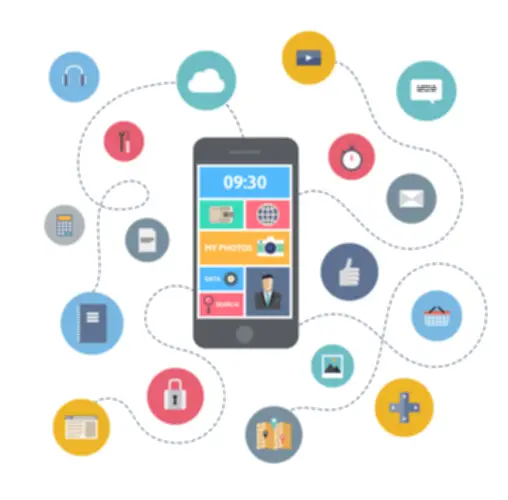Спасибо за письмо
Value at Risk (VaR) is a statistical measure of the potential loss in value of a risky asset or portfolio in a given period for a given confidence interval. It supplies what is risk level a single, easy-to-understand number that encapsulates the draw back risk of an funding. The Sharpe ratio allows investors to evaluate how much extra return they’re receiving for the extra volatility of holding a specific asset.

By ranking and color-coding these dangers in a danger assessment matrix, audit, threat, and compliance professionals can identify probably the most urgent threats to the business and plan for them. By grading the danger event’s probability and influence, the danger matrix offers a fast snapshot of the threat panorama. Visualizing the risk panorama on this method, audit, danger, and compliance professionals can extra easily foresee and decide the means to https://www.globalcloudteam.com/ reduce occasions that can have a substantial influence on the company. Risk analysis is a course of with a number of steps that intends to determine and analyze all of the potential risks and issues which are detrimental to the enterprise or enterprise.

The pyramid representing your portfolio ought to be customized to your risk preference. For instance, if the S&P 500 has been deemed the benchmark for a specific fund, the exercise of the fund would be compared to that experienced by the selected index. If the fund falls beneath the performance of the benchmark, it is thought of to have a unfavorable alpha.
As a half of an organization’s thorough high quality threat management system, evaluating risks through the risk analysis stage is finest carried out through the use of tools such as a 5×5 threat matrix. This can then result in a quantified expression of risk, having the output of the risk evaluation as a numeric value or a qualitative description on the extent of danger. The most effective method to handle investing danger is through common threat assessment and diversification. Although diversification won’t guarantee features or assure towards losses, it does provide the potential to improve returns based mostly on your goals and target level of danger.

More sophisticated methods like VaR and conditional VaR (CVaR) provide a subtler view of threat for specific situations. Yes, organizations usually customise the matrix to align with their trade standards, project requirements, or danger management frameworks. This can embrace adjusting scoring standards or adding specific danger categories.

This kind of danger arises from using financial fashions to make investment decisions, consider risks, or price financial instruments. Model risk can occur if the model relies on incorrect assumptions, knowledge, or methodologies, resulting in inaccurate predictions and doubtlessly adverse financial penalties. Model threat could be managed by validating and periodically reviewing monetary fashions, in addition to using a quantity of fashions to cross-check predictions and outcomes. Everyone is exposed to some type of danger each day—whether it’s from driving, walking down the road, investing, capital planning, or one thing else.
Overall, it’s attainable and prudent to handle investing dangers by understanding the basics of danger and how it’s measured. Learning the risks that can apply to different scenarios and a few of the ways to handle them holistically will assist all forms of traders and enterprise managers to keep away from unnecessary and dear losses. First revealed in July 2020, our COVID-19 danger ranges dashboard served as a device for the public to trace the pandemic in actual time. As the pandemic has developed and testing and reporting information have modified considerably, we now have retired the dashboard as of December 2022. After deciding how a lot threat is acceptable in your portfolio by acknowledging your time horizon and bankroll, you can use the investment pyramid approach for balancing your belongings.


It helps project managers create price, schedule or scope targets which may be sensible. SWOT evaluation permits managers to know the current scenario of their enterprise or project by taking a look at its strengths, weaknesses, alternatives and threats. As a risk evaluation device, it allows you to notice which of your weaknesses could be exploited by others and which external threats would possibly have an effect on your initiatives, similar to financial circumstances or the specter of new competitors. Risk evaluation is the method of figuring out threat, understanding uncertainty, quantifying the uncertainty, working models, analyzing results, and devising a plan.
EHS workers assess dangers by evaluating the severity of a possible hazard, in addition to the likelihood that it’ll happen. A danger analysis checklist or template is a doc that you need to use to verify that every one features of a project or enterprise are analyzed for potential dangers. Utilizing this kind of device helps make sure that nothing was overlooked and likewise helps maintain a standardized method when it comes to managing risks. The 4 components of threat evaluation are hazard identification, risk assessment, threat management, and threat communication. The danger evaluation process follows a general format but can differ primarily based on the wants of an organization or which structure works for them. Quality managers, EHS professionals, and group leaders should maximize expertise to determine dangers, list recognized hazards, conduct assessments, and come up with strategies to advertise continuous improvement.
Then examine the ultimate sum to the listing under to separate risks into the “low,” “medium,” “high,” and “extreme” categories. Another widespread sizing, the 4×4 risk matrix is for giant tasks that don’t require the extent of granular detail that the 5×5 danger matrix supplies. Depending on its utilization, however, the 4×4 risk matrix might lead to too many dangers falling into a “medium” impression ranking. In cases like this, it’s quite simple for dangers to be mislabeled, and as such, some mitigation methods would possibly fall to the wayside.
Risk chances are measured on a relative scale, not a statistical one, which makes it a qualitative danger evaluation device. This tool is also called the probability/consequence matrix by some project managers. For most organizations, having a software to visually characterize a risk assessment is paramount to effective operations management.
A 5×5 threat matrix is a type of danger matrix that’s visually represented as a desk or a grid. It has 5 classes each for probability (along the X axis) and influence (along the Y axis), all following a scale of low to high. No matter what business you’re in, you’ll all the time have projects and so, you must use project administration software program for danger analysis.
People are the first attack vector for cybersecurity threats and managing human dangers is vital to strengthening an organization’s cybersecurity posture. The NICE Framework supplies a set of building blocks that allow organizations to identify and develop the skills of those who perform cybersecurity work. It further helps learners explore cybersecurity work opportunities and engage in relevant learning actions to develop the data and skills necessary to be job-ready.
Спасибо за письмо
Спасибо за подписку